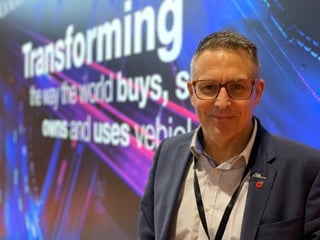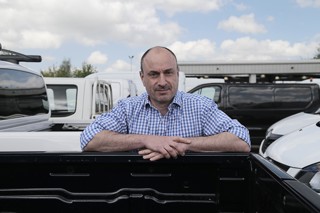By Professor Colin Herron, expert partner of Teletrac Navman
Probably more than any other element of transitioning to electric vehicles (EV), battery technology is the element that comes under most scrutiny. Let’s unpick a few elements for further exploration.
What are the different types of batteries and their chemical make-up?
The current (most popular) is the lithium-ion battery and is referred to as NMC, which is the cathode make up with N= nickel, M= manganese and C=cobalt.
The NMC is followed by numbers such as NMC 622 or NMC 811 which related to the ratios of each element e.g. NMC 622 is 6 parts nickel, 2 parts manganese, and 2 parts cobalt. What’s more, the ratios give different performance characteristics.
But there are now two viable alternative which are:
- Lithium iron phosphate battery (LiFePO 4) often shortened to LFP or LFMP (if manganese added). The benefits of this battery are long lifespan, high energy density, and safety.
- Sodium-ion (Na) batteries are attracting a lot of attention recently. The main reasons being that they are cheaper, safer, and more environmentally friendly. The negative is that they have a lower energy density and a shorter life span. Despite the performance challenges car makers are testing the market with these batteries whist working to improve the performance.
What are the pros and cons of each battery?
Energy Density
NMC batteries have a high energy density of 150-200 Wh/Kg. LFP batteries have an energy density of 100-150 Wh/Kg, while Sodium-Ion is similar to LFP. NMC batteries have better energy density than LFP or Na batteries which makes NMC batteries better for vehicles with a performance requirement. The energy densities quoted are the focus of a lot of research and will change.
Life cycle
An NMC battery has an expected cycle life of about 2,500 to 3,000 cycles, Na around 2,000, and a LFP battery has a typical cycle life of about 5,000 cycles. LFP technology produces a significantly better battery cycle life than NMC batteries and can last twice as long.
Cost per kWh
NMC batteries are expensive because of the materials used in the battery. NMC batteries require Nickel, Manganese, and Cobalt in considerable quantity for the cathode material. LFP batteries are cheaper than NMC batteries because they use iron and phosphate as cathode materials, which are abundant and cheap. Na batteries remove lithium and Na is abundant.
Safety
NMC batteries have complex chemistries which can be the subject of a thermal incident which is made worse by the chemical reactions which fuel any fire. Therefore, improper construction or inappropriate battery use can make it catch fire or explode, which has been seen mainly with e-scooters and e-bikes.
Many have home modifications or chargers which do not cut off when the device is fully charged, then overheat.
LFP batteries have a more stable chemistry as does Na. However, research has shown that EV fires per number of vehicles is actually less than Internal Combustion Vehicles.
Should I go EV now?
This is the question everyone’s asking themselves and the answer is dependent on circumstance. What we can say is that in the next few years the technology will not change much but the choice of chemistry to vehicle application will become clearer.
The likely scenario is that NMC will go into medium to large passenger vehicles and some vans (performance), LFP will enter service into larger vehicles of low milage and Na initially into small family cars (cost).
The range of vehicles will increase but battery chemistry and chargers will not change much.
If your fleet is car or light vehicle, city or suburban based where charging infrastructure is more prevalent, and relatively low mileage then transitioning should be an economically viable option.
If you’ve got long distance contracts, a large HGV fleet, or heavy-duty activity that requires lots of horsepower then the availability of vehicles, their torque and range capabilities and available charging infrastructure will be much more pivotal in the decision.
In fact, other alternative-energy vehicles may be more practical in some of these cases, particularly where torque delivery over an extended period may be a consideration.
In all cases do your research as it can go very well or be a big problem. What we can say is that the amount of infrastructure going in is considerable and the batteries are lasting much longer than expected.
Is there a way of treating the battery so that it lasts longer?
EV batteries have a built-in protection system called a Battery Management System (BMS) which is there to regulate activity. The needs of the business or driver will determine how a car is charged.
Many people plug their phone in every night at home regardless of the charge level and some will do the same with a vehicle.
However, slow charging starting at 20% then up to 80% is deemed to be the best. This of course is great if a daily journey allows this, but a full battery may be needed for many businesses and so the 80% rule can’t apply.
These days, artificial intelligence (AI) can also be deployed to work out how much a vehicle should be charged, at what speed, and when – this is available through some charging platforms and can also charge using the cheapest energy, as the cost of electricity fluctuates over the day.
Do battery replacements need to be factored into the cost of ownership?
Battery replacement isn’t really a concern at present, so much so that on January 6, 2022, a Tesla Model S P85 reached an impressive mileage milestone of 1,500,000 km (932,256 miles).
If a van or car is new and on a 3-5-year lease, there will not be a problem with its performance.
Average van miles driven is 13,000 in the UK so a van should be guaranteed for seven years and still have 80% of its conceivable total lifecycle left at that point.
There are no seven-year-old or older EV vans on the market which means we have no real-world evidence. There is also no market for people to produce replacement batteries yet so this is not a question that can be fully answered.
Are there issues with battery supply?
Now this is a real problem because one of the main barriers to EV take up is cost and supply. In my opinion the supply problem has allowed for high prices due to demand.
Ten years ago, a lot of car companies made EV noises but only Tesla did what they said they would do. The rest dipped their toes in the water, sat on the fence, or went off in a different direction. Then all the car makers realised time was running out and the lithium-ion battery was all that was on offer. At this point battery wars broke out.
All over the world billions are being spent building battery cell production facilities so once real volume is realised costs will inevitably come down. Using different chemistries for different vehicles will also reflect in the cost.
In simple terms, why buy a high performance battery for a low performance requirement.

























Login to comment
Comments
No comments have been made yet.